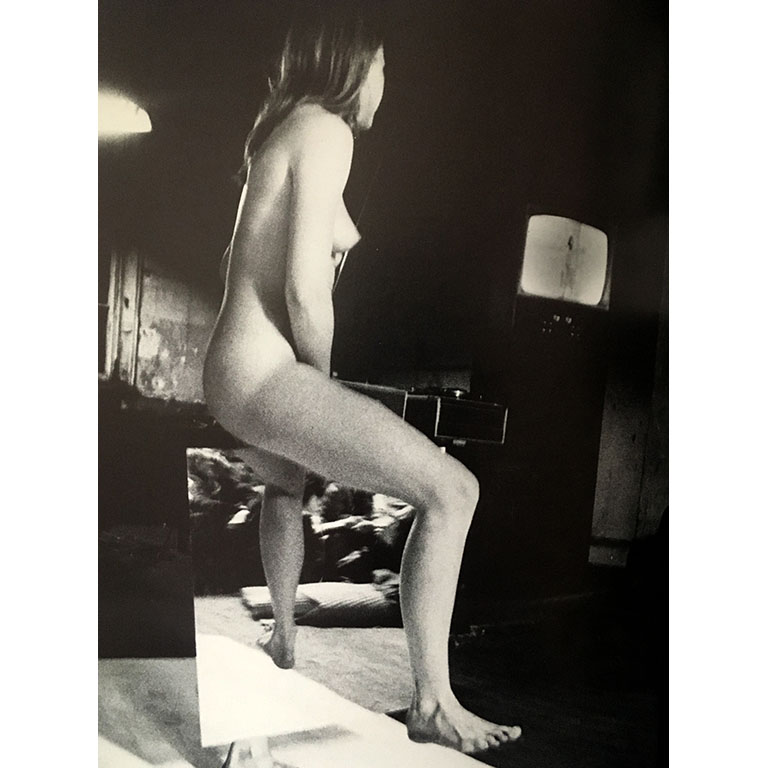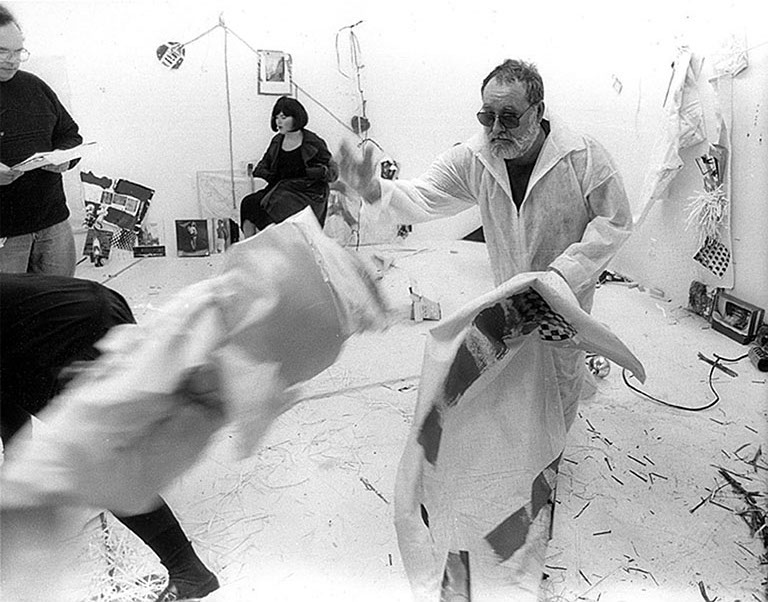PERFORMANCE
Intermedia means (after his constructivist phase as a sculptor) to reflect the limits of human perception in events, performances or happenings which arose as a consequence of the new media. Already the actions alone, played and depicted by his models, transcended the conceptual. To this day, it remains difficult to put into words the layers of presentation in his videos due to the fact that Hans Breder draws a medial mirror over his motifs which only distorts everything even further and renders them magical.
– Klaus-Peter Busse. Magic Theatre. About Intermedia and Hans Breder, 2013.

Eclipse, Mabie Theatre, Iowa City, IA. 1970 |

Hybrids, 93 Grand Street, 1970 |

Boxed-in, Intermedia Studios, University of Iowa, Iowa City, IA. 1993 |
|
Eclipse, 1970 In my piece, Eclipse, the movement of the performers is dictated by projected images or patterns on the floor. This discipline imposed from the outside makes movements rigid and deprives them of grace and balance. Natural conditions are reversed and are thus being made aware of. |
hybrids
The presentation of “Hybrids” itself can be seen as representing a hybrid form deriving from both dance and the visual arts. The use of nude figures in all of the pieces could be related to an important historical concern of painting and sculpture. The performer’s bodies were treated as objects: motion was simple and minimal. Dance, however, is concerned with human movement, and since movement of the human body did occur in all the pieces, they could be seen to relate to that art, too. If they had been presented as part of a dance concert, they would have been accepted as dance. Both sculpture and dance organize space; if performers are used as “living sculpture” and dance employs non-traditional movement, categories blend into each other. -Michael Kirby, “Hybrids,” The Drama Review, Vol. 17, June, 1973 |
Boxed-in Our overall assumption, therefore, will be that the instrumentalization of space in an academic context has a much greater impact on the production of knowledge than is generally recognized and that in order to significantly reconceptualize academic labor, one would have to interrogate the use and meaning of academic space. To this end, the Visual Practice and Theory Group is going to mount a one week event in which faculty and artists will produce an environment that calls current uses and meanings of academic space into question. Of special importance in this examination will be the role of art as a spatial praxis. How art performs and discloses the significance of academic space as a site for the production of knowledge and power is going to be a major academic theme throughout the week’s activities. –Hans Breder, Luccio Pozzi, Herman Rapaport |